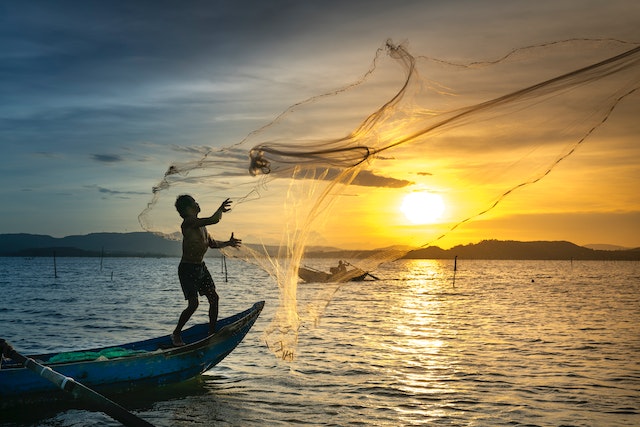Theme:
- Many countries are turning their attention to the blue economy due to its potential to drive sustainable growth and provide economic benefits such as job creation and increased trade. As India takes on the presidency of the G20 in 2022, there is an opportunity for it to play a leading role in advancing the blue economy by working with other countries and international organizations to promote its sustainable development and use.
What is the blue economy?
- The blue economy refers to the sustainable use and management of ocean-based resources for economic growth and livelihoods, while preserving the health of the ocean and its ecosystems. It includes a wide range of activities such as fishing, shipping, tourism, renewable energy, mineral extraction, and more.
Importance of the blue economy for the World:
- 80% of the world’s trade takes place through the seas.
- 40% of the world’s population lives in coastal areas and 3 billion people rely on the ocean for their livelihood.
- The natural capital of the Blue Economy is estimated to be worth around $25 trillion.
- The blue economy is also important for landlocked countries as it provides them with opportunities for trade and commerce through the sea.
- The oceans, seas and coastal areas contribute to food security and the economic viability of the human population.
Importance of the blue economy for India:
- India has a long coastline of 7,500 km that covers 9 states and 13 major ports and 205 notified minor and intermediate ports.
- Most of India’s business, around 95%, happens through these ports.
- The blue economy contributes about 4% to India’s overall GDP.
- India has 1382 islands and over 2 million square km of Exclusive Economic Zone. Having a vast coastline and a large Exclusive Economic Zone (EEZ) presents numerous opportunities for India’s blue economy.
Challenges:
- India’s blue economy is challenged by the lack of adequate infrastructure, such as ports, fishing harbours, and storage facilities, which limits its ability to fully exploit its marine resources.
- Overfishing is a major concern in India’s blue economy as it leads to the depletion of fish stocks and reduces the potential for sustainable fishing and aquaculture.
- Marine pollution from oil spills, waste disposal, and sewage discharge is a major threat to the health of India’s marine ecosystem and the livelihoods of people dependent on it.
- Climate change is causing significant changes to the ocean and its resources, such as rising sea levels, ocean acidification, and changing ocean currents. These changes are affecting the distribution and abundance of marine species and impacting the livelihoods of those dependent on the blue economy.
- The India-Sri Lanka fishing conflict is a long-standing issue between the two countries, and it has intensified in recent years due to the increasing demand for fish and other marine resources. The conflict involves disputes over fishing rights and the use of traditional fishing grounds, and it has created tensions between the two countries.
Government Initiatives:
- Sagarmala Project: The Sagarmala Project is a port-led development initiative aimed at modernizing and upgrading India’s ports and coastal infrastructure. The project aims to promote the growth of India’s blue economy by improving the connectivity between the ports and hinterland, reducing the transportation cost of goods, and attracting investment in the coastal and port-led areas.
- O-SMART: The Ocean Services, Technology, Observations, Resources Modelling and Science (O-SMART) initiative is aimed at enhancing the scientific understanding of the ocean, its resources, and its impact on the environment. The initiative aims to promote sustainable ocean governance and enhance the knowledge base for effective ocean management.
- National Fisheries Policy: The National Fisheries Policy is a comprehensive policy aimed at promoting the growth and development of India’s fisheries sector. The policy aims to promote sustainable fishing practices, enhance the livelihoods of coastal communities, and increase the efficiency and competitiveness of the sector.
- Deep Ocean Mission: The Deep Ocean Mission is a comprehensive program launched by the government to explore, conserve and sustainably use India’s ocean resources. It aims to enhance the country’s capabilities in deep-sea exploration and resource utilization, including mineral and bioresource exploration, and develop deep-sea technologies.
Conclusion:
The government’s initiatives to promote the blue economy are commendable and demonstrate the government’s commitment to creating a sustainable and inclusive blue economy. These initiatives have the potential to drive economic growth, create livelihood opportunities, and protect the ocean’s resources. However, there is still much work to be done. To fully realize the potential of India’s blue economy, the government must continue to implement sustainable resource management practices, enhance coastal infrastructure, provide alternative livelihood options for fishing communities, reduce marine pollution, encourage private sector investment, and invest in research and development. It also needs to have diplomatic talks with Sri Lanka to resolve the India-Sri Lanka fishing conflict. With a focus on these key areas, India’s blue economy can flourish and provide a model for sustainable and responsible ocean-based economic growth.
Photo by Quang Nguyen Vinh
Your Turn…
What’s your take on the blue economy topic? Express your point of view through the comment section below. And subscribe to our blog to read answers to the trending GD topics.
References:
Copyright @ Group Discussion Ideas.

